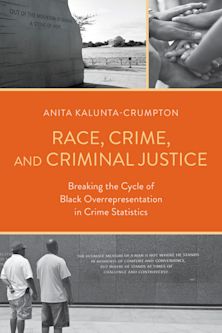- Home
- ACADEMIC
- Criminology
- Criminology - Other
- Minorities and Deviance
You must sign in to add this item to your wishlist. Please sign in or create an account
Description
Grounded in both current and original research, Minorities and Deviance, expands the definition of stress and its relationship to deviance, providing a better understanding the role stress can play in addiction, obsession, and self-harm. Focusing on ten types of relatively minor deviant behaviors, Pamela Black explores the stress engendered by minority group membership and the associated feelings of powerlessness and how this can serve as a significant source of stress in and of itself, but when combined with other stressors magnifies the possibility of deviance. Using theoretical constructs derived from Robert Agnew’s 1992 General Strain Theory, Black tests the effects of not only minority group membership and powerlessness as stressors, but also examines group differences in the effect of more traditional forms of stress: finances, health, and relationships.
Table of Contents
Introduction
Chapter 1: Theoretical Perspectives on Deviance
Part Two: Deviant Behaviors
Chapter 2: Self-Harm
Chapter 3: Body Modification
Chapter 4: Eating Disorders
Chapter 5: Hoarding
Chapter 6: Video Game Addiction
Chapter 7: Gambling
Chapter 8: Pornography and Cybersex Addiction
Chapter 9: Casual Sex
Chapter 10: Cross-Dressing
Chapter 11: Over-the-Counter Drug Abuse
Part Two Conclusion: General Strain Theory, Minorities and Deviance: What the Literature Says
Part Three: Minorities, Stress and Deviance
Chapter 12: Methodology
Chapter 13: Minorities and Deviance
Chapter 14: Power, Stress, and Deviance
Chapter 15: Minorities, Power, Stress, and Deviance
Conclusion
Product details
| Published | 15 Nov 2018 |
|---|---|
| Format | Ebook (Epub & Mobi) |
| Edition | 1st |
| Extent | 204 |
| ISBN | 9781498546317 |
| Imprint | Lexington Books |
| Illustrations | 7 BW Photos, 12 Tables |
| Publisher | Bloomsbury Publishing |
About the contributors
Reviews
-
Minorities and Deviance encourages readers to understand the dynamic ways people cope with forms of strain, illustrating that deviance is not a universal or monolithic experience. Importantly, it highlights the role of strain as an emotional experience.
David C. Lane, University of South Dakota



































